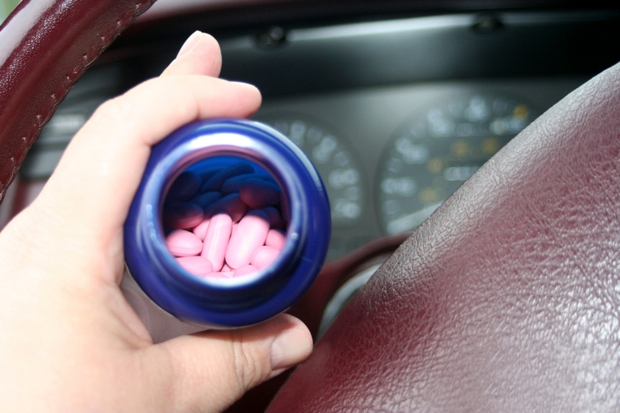New drug-driving regulations came into force on Monday, establishing legal limits for the levels of sixteen intoxicating substances in the blood. Eight are illegal drugs, and eight are legal, prescription drugs. Police are being issued with new roadside testing kits, though these can only detect the presence of cocaine and THC (the main psychoactive ingredient in cannabis). Others suspected of driving under the influence will still have to be taken down to the station for a blood test.
The limits set for the illegal drugs are, perhaps unsurprisingly, lower than those set for prescription drugs. I am not about to argue for leniency in cases of drug driving, but the disparity between the two classes of drug reveals a lot about police priorities, and raises an important question. Set at such absurdly low levels, are these new measures simply intended to catch out a certain kind of drug user under false pretences?
The blood limits for heroin, cocaine, ketamine and THC are so low that they are likely to register in users long after any impairment to their driving ability has worn off. Conversely, users of the eight prescription drugs (six benzodiazepines and two opiates) will be allowed blood levels likely to imply current impairment, so long as they can show a prescription or pill-bottle at the roadside. I can understand the impulse to treat illegal and prescribed substances differently, but isn’t this meant to be a question of road safety?
It is worth comparing heroin and its legal – and highly profitable – substitute Methadone. Heroin users will be caught out with only 5 micrograms per litre of blood, while methadone users are free to drive with up to 500 micrograms per litre. Regardless of our prejudices against heroin addicts, are we supposed to believe that there is a hundredfold difference in the effects of these two drugs? If not, then what is the purpose of the new regulation?
Valium (diazepam), one of the six prescription benzodiazepines listed in the new regulations, is allowed at up to 550 micrograms per litre of blood. I’m sure you’ve heard of Valium. It owes its notoriety to its remarkable effectiveness. After any kind of bender, no matter how wired, coked-up or strung-out, you can (apparently) pop a Valium and look forward to a restful eight hours. Temazepam, another knockout ‘benzo’, is allowed at up to 1,000 micrograms per litre.
For comparison, the THC limit is set at 2 micrograms per litre. Evidence used by the government’s Expert Panel on Drug Driving has indicated that actual impairment after ingesting THC subsides after two and a half hours. Set at this level the roadside test is likely to catch out cannabis smokers up to 24 hours after use, well after the effects have worn off. Is this, in fact, precisely the point?
Driving to the shops with a brain full of Valium is hardly safer than heading out 24 hours after you have smoked a joint, but as long as you can find your prescription there’s little the police can do. Clearly these measures are just a new way to catch out illegal drug users under the guise of improving road safety.






Comments